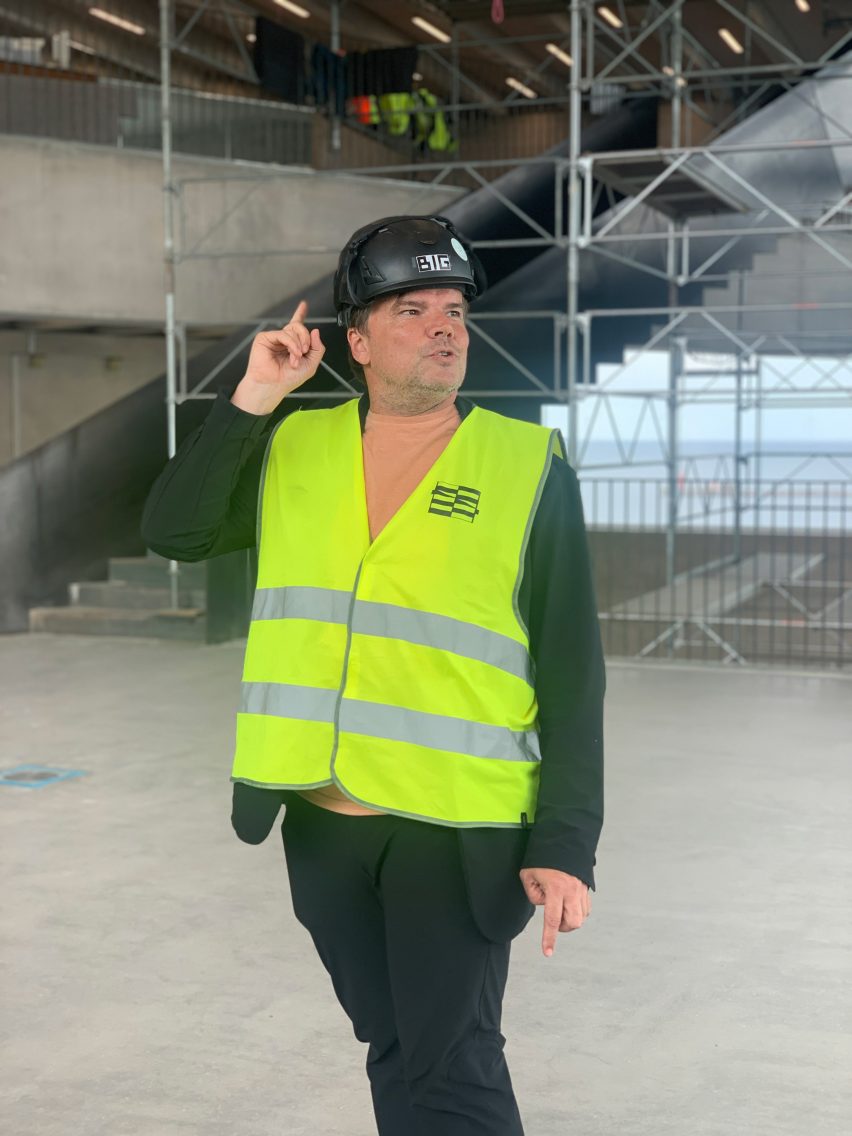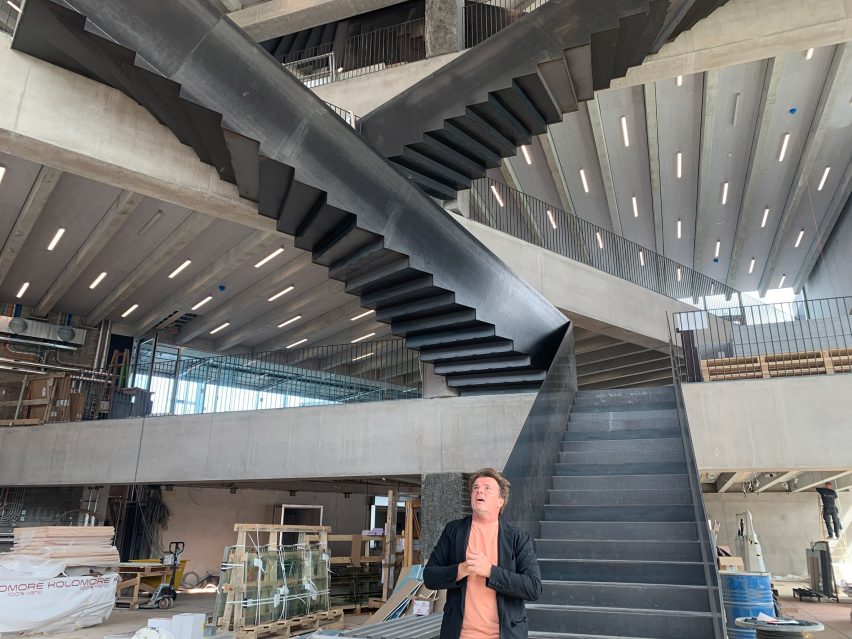
Fame "forces you to constantly reflect on your impact and motivation" says Bjarke Ingels
Danish architect Bjarke Ingels discusses what it's like to be one of the world's best-known architects and the current limitations of AI in this interview.
Ingels sat down with Dezeen at the UIA World Congress of Architects in Copenhagen after delivering a keynote address to delegates.
As the session ended, the Bjarke Ingels Group (BIG) founder and creative director was surrounded by fans hoping to get a photograph with him.
Celebrity "a double-edged sword"
Ingels told Dezeen he "absolutely" did not expect to become so well-known in the course of his architecture career and indicated that being in the public eye does not particularly appeal to him.
"I was speaking to the directors and writers of the Game of Thrones show and talking about why George RR Martin is not finishing the books, and they said it's the problem of celebrity," he said.
"It's interesting for two weeks, and it lasts for the rest of your life, right? I think, happily, in architecture it's a very different story – it's a very limited audience that even cares about buildings."

Ingels' approach to architecture has been influenced by his high personal profile, which forces him to reflect on his impact and motivation.
"I think on one hand, the fact that some of our projects have spoken to people in ways that are relevant to them has offered us the opportunity to do some exciting work that we would love to do by people that were drawn to our way of thinking and working," he said.
"But of course, the flip side is almost like knee-jerk antagonism that is maybe a good form of thermostat," he added.
"It definitely forces you to constantly reflect on your impact and motivation, but it also forces you to grow a little bit of a thick skin because not every journalist or public commentator will do the heavy lifting of actually informing themselves about a subject before opining on it."
"So I think it is a double-edged sword, but you know, as long as the conversation is about the work that we do, I think we're in a good spot," he added.
Having initially wanted to illustrate graphic novels, Ingels credits a 1993 trip to Barcelona with making him realise "that architecture could actually be exciting, that buildings in themselves could actually be works of art, full of experiences and stories, and thoughts".
"I had seen how interesting architecture could be and I was interested in finding out why are modern buildings so boring and could it be different," he said.
Ingels' keynote address focused largely on his notion of "hedonistic sustainability", which now underpins much of his studio's work.
Speaking to Dezeen about the concept, he suggested that the push for circularity in architecture could lead to more ambitiously designed buildings.
"I think circularity is maybe not so much about restriction, but as a thoughtful preconception of 'what's going to happen to this thing when it's no longer used for this thing'," he said.
"So I think if you design things that are so generous and so desirable that even if the original tenant decides to go elsewhere or ceases to exist, people will go out of their way to imagine new ways of using these buildings."
BIG has "dabbled a little bit" in AI
Regarding artificial intelligence (AI), Ingels said BIG is currently exploring how it might use the technology in the future.
"We've dabbled a little bit looking at what the current large language models can do but I think so far, it remains a little bit on appearances," he said.
"And I think some of the work we're involved in is to try to see if you can not just get the appearance of intelligence or design intent, but actually to get the underlying logic," he continued.
"Because ultimately although a lot of architecture is practised from a very superficial point of view where it really is about appearances, I think where it becomes interesting is when you look at the underlying logic that makes our buildings and our world appear the way they do because of how they perform underneath."

In May, BIG was named as the masterplanner of the floating port city Oxagon, one of 10 regions that will make up the controversial Neom project in Saudi Arabia.
With the interview running low on time, Ingels interrupted Dezeen's question about the project and ended the conversation.
"Let's skip it," he said and walked away.
This week, BIG revealed images of its new headquarters, currently under construction in Copenhagen harbour and expected to be filled by up to 500 staff later this year.
The floors of the seven-storey concrete building semi-rotate upwards around a single stone column, creating varying staircase lengths and ceiling heights.
"We wanted everybody to see each other and walk by each other on a daily basis," Ingels explained while giving a tour of the building last week.
He claimed that because the site is surrounded by saltwater on three sides, concrete had a lower life-cycle carbon footprint than timber – which would decay in such an environment – and that the cement used in the project has a smaller environmental impact than the standard form of the material.
"We finally found a sustainable argument for exposing concrete," Ingels quipped.
He also revealed that he had considered taking the top floor for himself as a penthouse apartment, before being convinced by his partner that living so close to work was not a good idea.
Main photo courtesy of UIA World Congress 2023
If you enjoy reading Dezeen's interviews, opinions and features, subscribe to Dezeen In Depth. Sent on the last Friday of each month, this email newsletter provides a single place to read about the design and architecture stories behind the headlines.